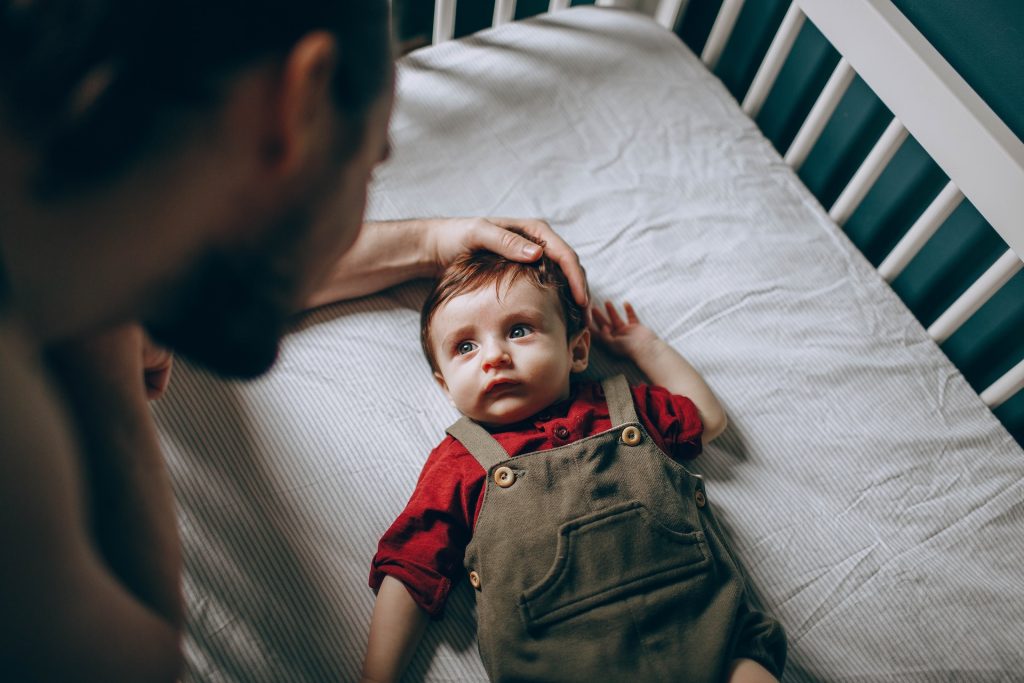6.9 Safe Sleep Practices

Children enrolled in infant programs in early years settings will be encouraged to sleep in a crib to adhere to safe sleep practices guided by the Public Health Agency of Canada. Licensed child care programs in Ontario must follow the Joint Statement on Safe Sleep (2021) for children 12 months and under. The rate of Sudden Infant Death Syndrome (SIDS) has decreased in infants in Canada since safe sleep measures were implemented (PHAC, CPS & BB, 2021). Educators working with children in infant programs need to be aware of safe sleep practices to support families in understanding preventative measures.
Read (PDF)
Read the Joint Statement on Safe Sleep:
The transition of infants into early years settings takes time. Some babies may not fall asleep unless they are in a swing, bouncy seat, or are rocked to sleep. Once the infant is asleep, it is important to move the child to a designated crib. This process may take some time, as the child may wake up as soon as they are placed into a crib. Infants typically adjust to this sleeping practice in early years settings more quickly than at home, where they may have been used to a different sleeping practice. Educators are obligated to follow the guidelines outlined in the Joint Statement on Safe Sleep for any child 12 months or younger. More information may need to be shared with families to support their understanding of educators’ obligations around safe sleep practices in early years settings. A guide for families can be found under Additional Resources in this chapter.
Sleep Supervision
Toddler and preschool early years programs provide cots for children to nap or to have a place for some quiet time in their day. Children should have a cot designated for them, and the sheets changed and cot sanitized in between use by different children. A plan for where children sleep should be available for families and posted for occasional employees who do not know where cots are placed during nap time. Children appreciate the familiarity of having their cot placed in the same location each day. Families should be consulted about sleeping arrangements upon enrolment and any time sleeping plans change (OME, 2019).
Some infants, older than 12 months, may not sleep in a crib at home, so may have challenges adjusting to a crib in a licensed child care program. A plan may be developed with the family to provide a child-sized cot for the child in the infant playroom, where the child can be supervised at all times while sleeping.
Nap and rest periods should never exceed two hours. Some exceptions may be made in consultation with families and through observing the needs of the child. Organizational policies outline how often educators are to perform visual checks for sleeping children. These visual checks are documented, including the date and time. This preventative measure ensures children are observed for any distress or concerns during rest periods. The lighting should allow for educators to easily conduct visual checks.
Electronic monitoring devices may be used in a separate infant sleep room, but needs to be consistently monitored, accompanied by regular, documented visual checks. Some infant programs may have an educator stay in the naproom once there are 3 or more infants napping at the same time. Visual checks still need to be conducted and documented in this situation.
As children get closer to kindergarten age, they may transition out of napping each day. This plan is discussed with parents, and quiet activities may be implemented for a child. A cot must still be available for the child if they wish to rest or sleep. Many older preschool programs have a learning space available for children who no longer nap. This space must be staffed to meet mandated ratios and cannot participate in reduced ratios.
Helpful Hints: A sleep room logbook is helpful to document visual checks. A new date can be logged daily with the times and notes documented each day. This may be a separate logbook from the daily classroom log. Some classrooms may have a clipboard hanging on a wall near the nap area to log visual check times daily, while other programs may log visual checks digitally.

